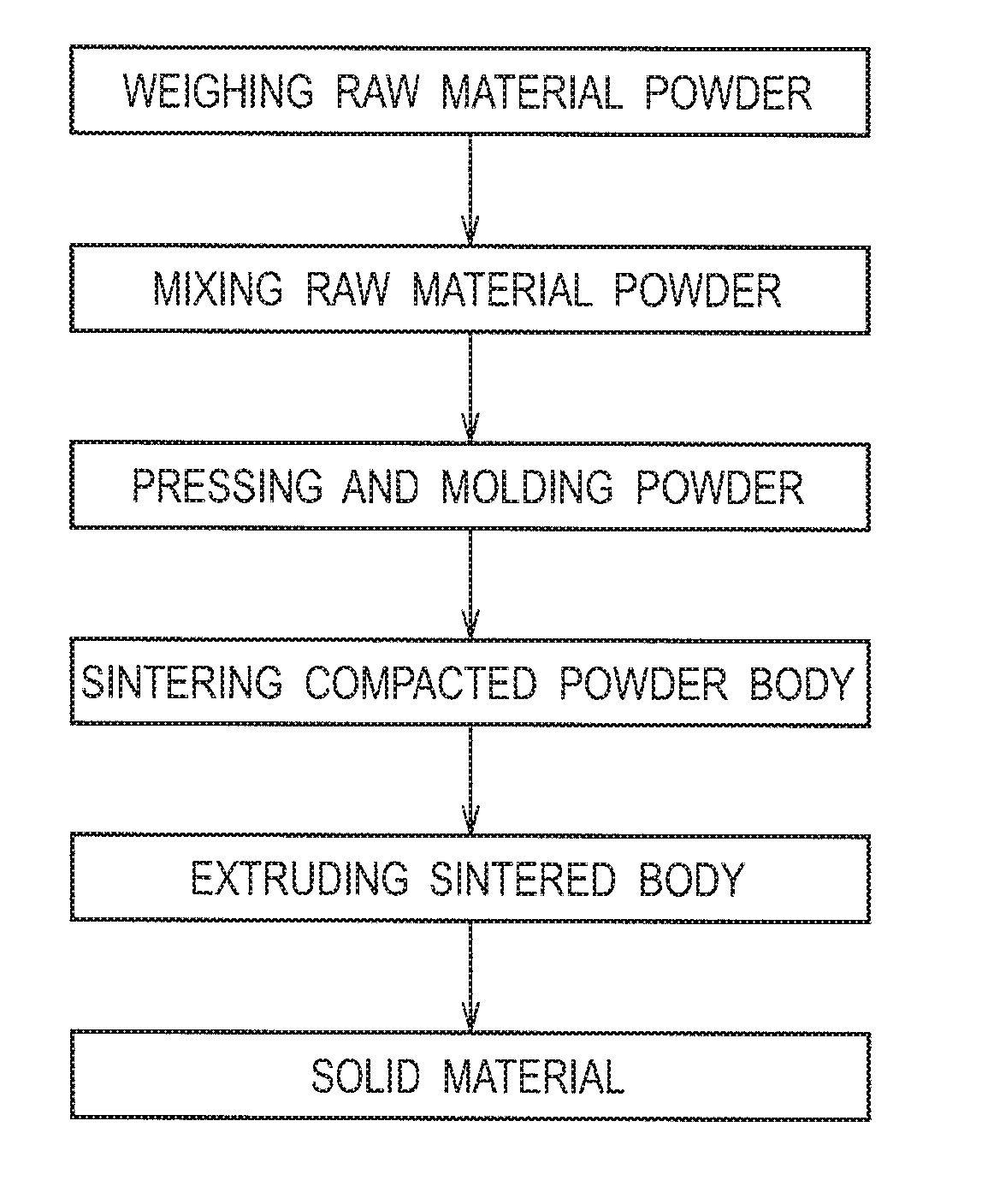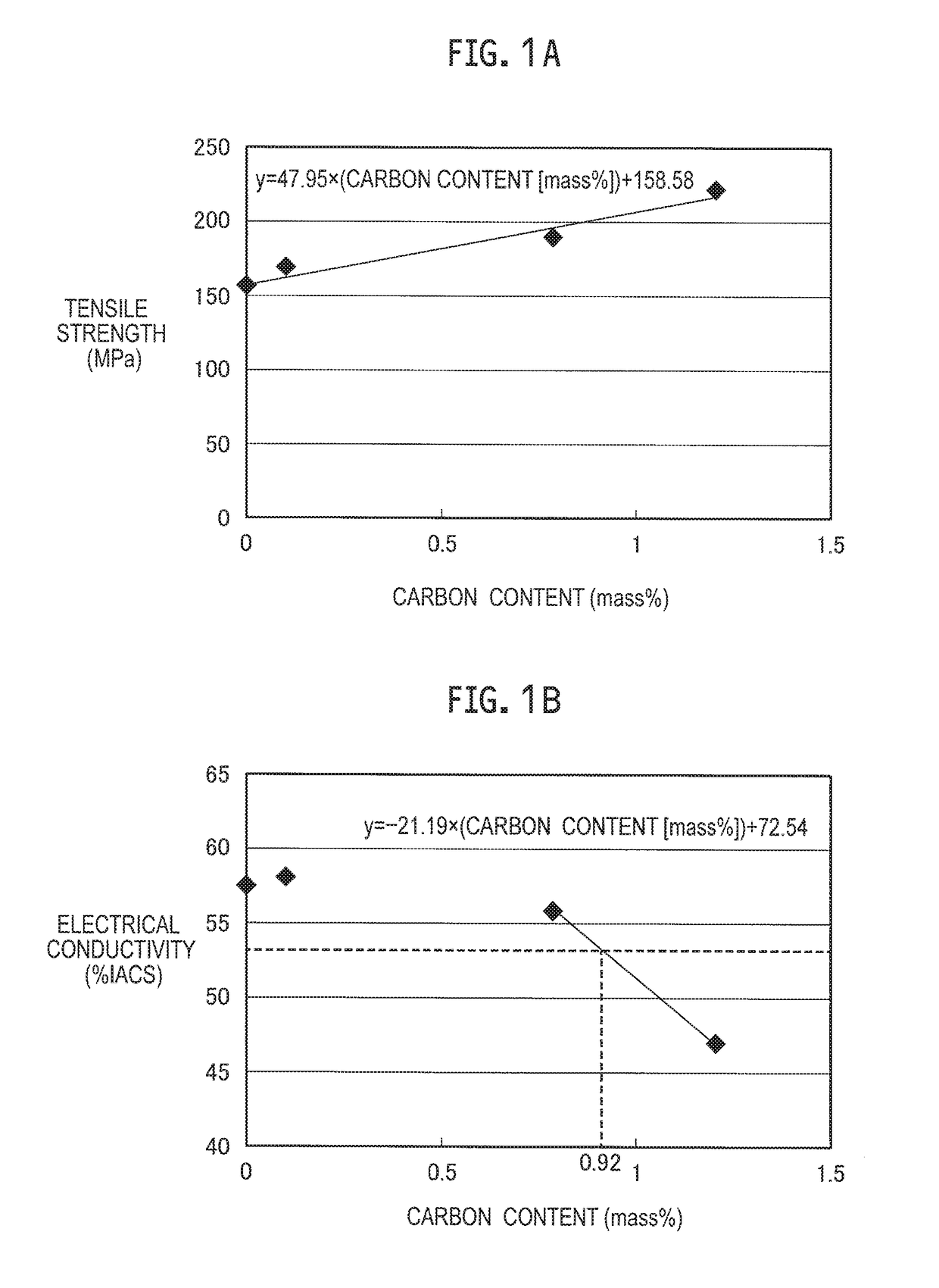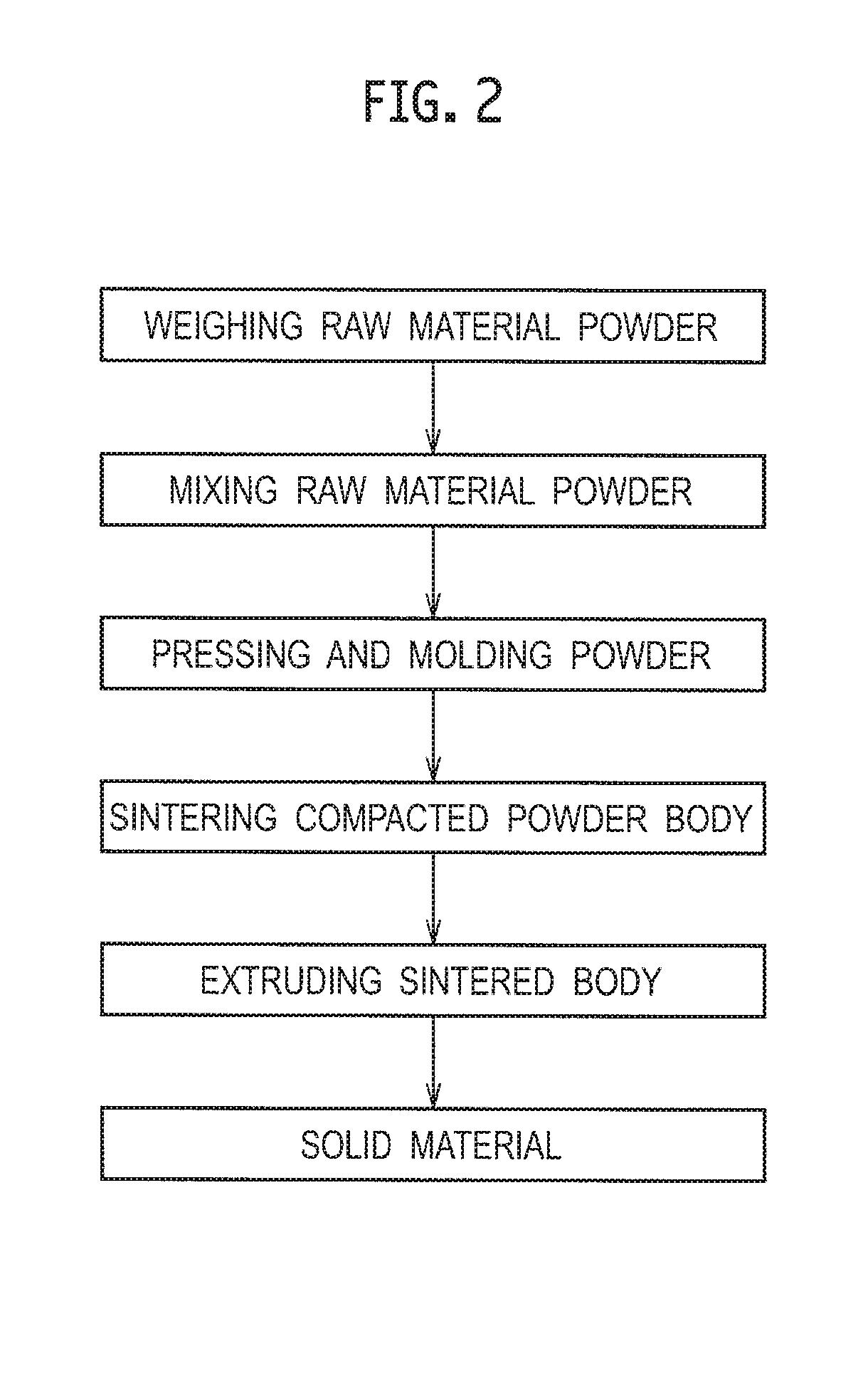Aluminum-based composite material and method of manufacturing the same
a composite material and aluminum technology, applied in the direction of conductive materials, conductive materials, capacitors, etc., can solve the problems of reducing aluminum is lightweight but has a problem of insufficient strength, and copper has high tensile strength and electrical conductivity but has a problem of weight, so as to reduce elongation percentage and electrical conductivity, improve strength, and reduce the effect of strength
- Summary
- Abstract
- Description
- Claims
- Application Information
AI Technical Summary
Benefits of technology
Problems solved by technology
Method used
Image
Examples
example 1
[0057]First, aluminum powder and carbon nanotubes were weighed such that the content of aluminum carbide in an aluminum-based composite material obtained was 4.00% by mass. The aluminum powder used was ALE16PB (available from Kojundo Chemical Laboratory Co., Ltd.) having a powder diameter of 20 μm. The carbon nanotubes used were FloTube 9000 G2 (available from Cnano Technology Limited).
[0058]Next, the weighed aluminum powder and carbon nanotubes were placed into a pot of a planetary ball mill and subjected to rotation processing, so as to prepare mixed powder. The resulting mixed powder was placed into a metal mold and pressed at 600 MPa at room temperature, so as to prepare a compacted powder body.
[0059]The compacted powder body thus obtained was heated with an electric furnace at 630° C. for 300 minutes in a vacuum, so as to prepare a sample of this example.
example 2
[0060]Aluminum powder used was ALE11PB (available from Kojundo Chemical Laboratory Co., Ltd.) having a powder diameter of 3 μm. The aluminum powder and carbon nanotubes were weighed such that the content of aluminum carbide in an aluminum-based composite material obtained was 4.84% by mass. The other steps were performed in the same manner as in Example 1, so as to prepare a sample of this example.
example 3
[0061]Aluminum powder and carbon nanotubes were weighed such that the content of aluminum carbide in an aluminum-based composite material obtained was 3.16% by mass. The other steps were performed in the same manner as in Example 2, so as to prepare a sample of this example.
PUM
| Property | Measurement | Unit |
|---|---|---|
| diameter | aaaaa | aaaaa |
| diameter | aaaaa | aaaaa |
| diameter | aaaaa | aaaaa |
Abstract
Description
Claims
Application Information
 Login to View More
Login to View More - R&D
- Intellectual Property
- Life Sciences
- Materials
- Tech Scout
- Unparalleled Data Quality
- Higher Quality Content
- 60% Fewer Hallucinations
Browse by: Latest US Patents, China's latest patents, Technical Efficacy Thesaurus, Application Domain, Technology Topic, Popular Technical Reports.
© 2025 PatSnap. All rights reserved.Legal|Privacy policy|Modern Slavery Act Transparency Statement|Sitemap|About US| Contact US: help@patsnap.com



